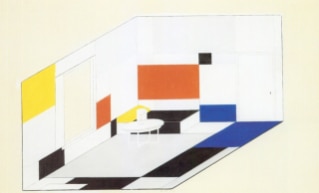This article was originally published in Domus 509 / April 1972
Ibiza. San Miguel Bay. ICSID Congress (14-16 October)
A meeting on the beach, between those of the "how", the professional designers, and those of the "why", the youngsters from Instant City. In the hotels, the professionals; under the pneumatic, semitransparent and silent domes, young people from many countries: Spain, United Kingdom, Ireland, Austria, USA. Indifferent to the fantastic beauty and technical imperfections of the Instant City they — or a part of them — built, in a short period and for a short period of time, these young people believed in presence; were worth for their presence; moved emotions, confrontations, ideas for this presence.
Maria, young girl visiting Instant City "... From the "houses" of Instant City different young people appear: one is carrying a rabbit, another is playing the flute, bare feeted, a towel wrapped around the hips or wearing a fur-coat. Some have a red plastic ribbon on their forehead. It's the same material as that of Instant City. It continues from their "houses", from floors and walls of them, binding them together for this time — it is their red ribbon for this moment. Instant City arouses people's attention. I don't think that it disturbs the inhabitants of Instant City when people come to look at their town, but it is a pity that most people come to say that it has beautiful colours and it looks nice. One thing that shocks these young people in their town is that most people don't even try to think what is inside the idea. In Instant City people touch each other. They are friends. It has been an intention to create an environment, which would exist not as an encouragement to social relationships but as an answer to them..."
(Helsinki, 05 January 1972)

(Comité Ad Hoc pour la Ville Instantanée ADI/FAD, Barcelona)

Nos pusimos en contacto con José Prada, experto en arquitectura neumática, el cual elaboró un lenguaje minimo que permitiría a cualquier persona construirse una cobertura en un tiempo reducido, con un instrumental minimo. La energia neumática que mantendria en pie la ciudad, sería comun a todas las células. Disponíamos, pues, de un sistema constructivo muy tecnológico pero para cuya realización se requerian unos métodos totalmente artesanales (grapas cada centímetro, intersecciones entre cilindros y esferas ejecutadas con cuerdas para absorber las tensiones, puertas de lormas orgánicas) donde el ingenio daba allernativas a la carencia de medios.
Nos pusimos en contacto con las firmas comerciales que podían suministrarnos el PVC, ventiladores, grapas ... Y por fin, a finales del mes de agosto, un grupo muy reducido construimos en Sardanyola el primer prototipo hinchable y, a principios de septiembre, salia hacia Ibiza el primer grupo de trabajo formado por gente llegada de todo el mundo para realizar durante un mes la infraestructura necesaria y las zonas comunes ..."
(Hogares Modernos, November 1971)
Indifferent to the fantastic beauty and technical imperfections of the Instant City they — or a part of them — built, in a short period and for a short period of time, these young people believed in presence; were worth for their presence; moved emotions, confrontations, ideas for this presence

The project was most interesting in its attempt to create a social structure which maximises choice and reduces social contact/interference to the level acceptable to the individual, and in the flexibility which allowed people to act contrary to more basic ideas of Instant City if they wished. The fact that it lasted four or five weeks, and was physically isolated from towns, meant that despite lack of services, it was in almost every respect self-sufficient. This lack of services and the smallness of the numbers (never more than 350 people) meant that as a guide to solving problems of physical servicing, it is of little use. It did however show the need for a structured information system (electric or not). And possibly, clearest of all, it showed that the social or design idea of Instant City need not suffer even if its physical forms are realised by staple-gun technology".
(Architectural Design, December 1971)













